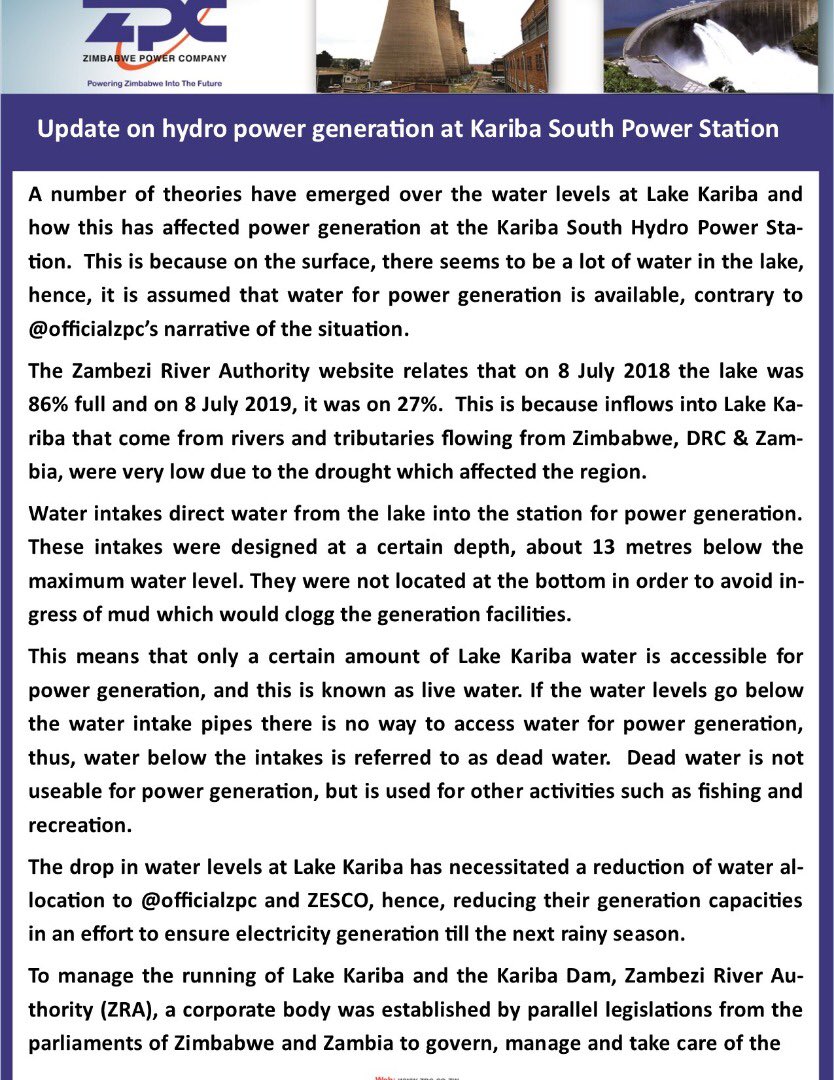According to the Zimbabwe Power Company (ZPC), a subsidiary of ZESA Holdings, not all the water stored in Lake Kariba is available for power generation.
This entails that power generation will come to a halt when a certain level is reached because there is live water and dead water. Part of a statement released by ZPC reads:
Water intakes direct water from the lake into the station for power generation. These intakes were designed at a certain depth, about 13 metres below the maximum water level. They were not located at the bottom in order to avoid ingress of mud which would clog the generation facilities.
This means that only a certain amount of Lake Kariba water is accessible for power generation, and this is known as live water.
If the water levels go below the water intake pipes there is no way to access water for power generation, thus, water below the intakes is referred to as dead water.
Dead water is not usable for power generation but is used for other activities such as fishing and recreation.
The drop in water levels at Lake Kariba has necessitated a reduction of water allocation to ZPC and ZESCO, hence, reducing their generation capacity in an effort to ensure electricity generation till the next rainy season.




I wonder if it was not possible to redesign a recycling method at Kariba instead of letting the water go. This would have saved us better in view of so many draughts over the years. One way would have been to build a receiving dam below the main one and recycle when the levels are predicted to be low that year.
Then you would need more electricity to pump back the water to the dam.